#schema monk
Explore tagged Tumblr posts
Text


my brother tell me this is "opium coded"
5 notes
·
View notes
Photo
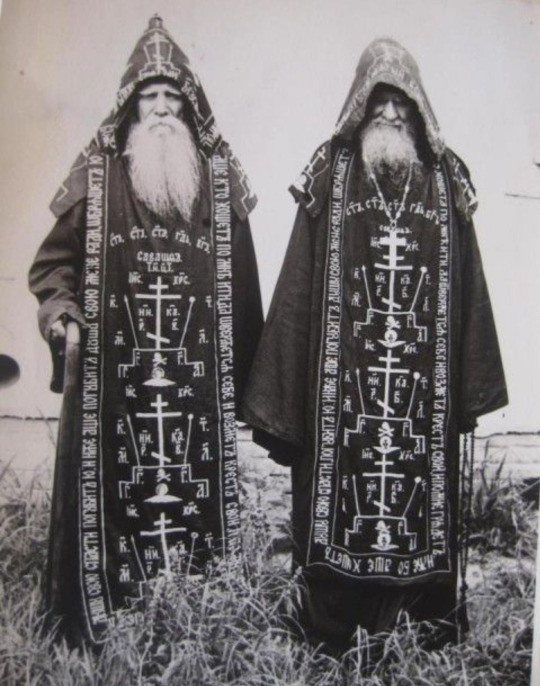
Silent ‘Grand Schema’ Monks of the Russian Orthodox Church, Balaam Monastery, Russisan Karelia 1888
343 notes
·
View notes
Text

Valaam,Russia (1889)
#Россия#Russia#vintage#photography#Христианство#Christianity#Православие#Orthodoxy#christian faith#religion#schema-monk#monk#orthodox#christian#religious#priest#russian#Валаам#Valaam#Valamoi#Valamo#Eastern Europe#photo#beauty#past#Europe#photos#history#european#1890s
324 notes
·
View notes
Text
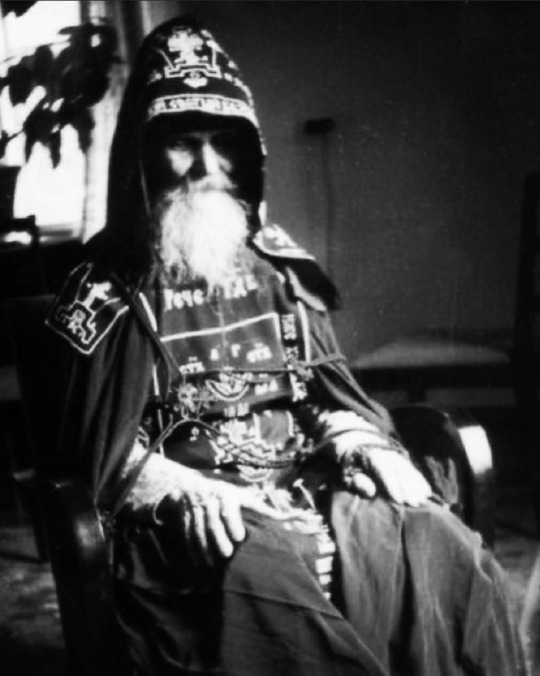
Elder Michael the Blind
#eastern orthodox#orthodox christianity#orthodox#great schema monk#monasticism#asceticism#ancient christianity
42 notes
·
View notes
Text

love this style
1 note
·
View note
Text

Schema monk Iroh goes hard
#orthodox christianity#greek orthodox#russian orthodox#orthodox#orthodoxy#eastern orthodoxy#orthodox church#schema#uncle iroh#iroh#atla#avatar the last airbender#avatar
26 notes
·
View notes
Text
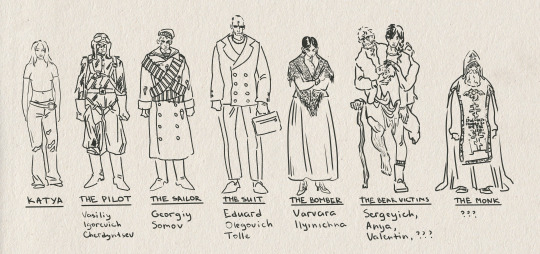
ok since the overall response was positive i'm gonna tell you a bit about this project!
this is a series of jokey mini-comics detailing the (after) lives of a band of ghosts who are stuck in an abandoned summer camp near omsk location pending in 2005. this is basically bbc ghosts but russian and with more gore.
katya is the only one who's alive! she's 15 and started seing ghosts after her shitty boyfriend crashed his bike with her in the back seat. she's trying to help the ghosts mediate their relationships with eachother and the world, and they're helping her with homework (sometimes) or being general nuisances (more often).
the pilot died in 1944 when his plane crashed while he was test-flying it. he was wounded in the frontlines and sent home to recover, but decided to help out in the poiloting school in the meantime. the guy on whose watch the plane crashed was shot for sabotage afterwards, and his ghost in turn is pretty resentful about that, because it was just the lack of funds and old equipment going out. plot: katya helping them meet and make peace with eachothers deaths. the pilot had a daughter himself and thus is feeling very paternal towards katya. most organised and helpful of the ghosts. died with one broken cigarette whick they all now share and an officers notepad with his papers and maps, where he sketches from time to time (it all disappears after he stops concentrating 😔) has ideological beef with the suit and ex-beef with the sailor (they are besties now).
the sailor died in 1921 during the kronstadt rebellion and was very surprised when he woke up near omsk. he had a precious cigar case that was lost a year before his death, and in the chaos of th civil war found itself in a magpie's nest in the woods near omsk. his soul is tied to this case, and he spends a lot of time trying to get to the case and taunting the magpie family (unsuccessfully). has a tin of cocaine, 4 machine gun belts, no machine gun and an attitude. loves asking katya to marry him and run away to saint-petersburg together. plot: katya finally getting him his cig case back. obsessed with space and in love with yuri gagarin, wants to find and meet his ghost
the suit died in 1997 during a buisness deal gone wrong, shot and buried on the abandoned camp territory, is still a bit pissed about that. is disgusted by the starry-eyed belief in the happines of all mankind the pilot and the sailor exibit and in general is tormented by the fact tht he will have to spend his afterlife in a summer camp surrounded by these people. loves to come harass the monk living in the lake nearby to get some sort of ideological closure and figure out how afterlife works. plot: getting katya the money to move to another sity when she goes to uni
the bomber died in 1896. tried to sicide bomb a govt official but was discovered and sentenced to death, later pardoned bc of Nicholas 2 acending to the throne, sentence switched to siberian exile for 25 years with no rights to return. killed herself out of boredom and despair. gets along well with the sailor (he is slightly intimidated by her), would really like to talk to the monk but he doesn't answer to anyone. plot: idk so far 😔
the bear victims - a lego of bear victim parts. that's it. a comedic side character.
the monk died alone on an island in the lake in ????, the island was later blown up to increase the water capacity flowing from the lake to a water reservoir. doesn't talk to any of the other characters bc of his seraphimic schema and vow of silence & solitude. slowly warming to the idea of breaking his vow and trying to help the other ghosts move on, because if god's not letting him go, that must be for a reason, right? plot: speaking to katya
46 notes
·
View notes
Note
does Divine Solis have a pope equivalent, or is the theology more decentralized?
lore subject to change and all that
generally, edicts are handed down directly from spiritual heads and their offices, and schisms are an impermissible sin that results in the absolute annihilation of the soul. on paper, this means that there is only one church, one faith, one holy religion, so on. that's not entirely true, but it's held
The Divine Solis is officially without a leader for its state, given that the role of high imperator was based upon a sacred contract given to the bloodline of the First Saint, which is known to be extant though not in flesh, and so the chair must remain empty
though the state of the Divine Solis (upon which all military and legal power theoretically spins) is technically headless, it follows the step of the Holy See, which is split broadly along two party lines, each containing several dozen sects which propose that their covenants grant them access to the reins of the church, each led by a father who is elected from the party's ranks (and in truth serves much like any other politician)
the role of the fathers is to represent the interests of each sect that pays allegiance to them, and to that degree, there are theological parliaments that shift over time. several of these sects originally had their own fathers and methods of selecting them, but ceased doing so to consolidate their power
because, strictly speaking, the high clergy is dead (a symbolic gesture in which one immortalises their soul to the service of the church while leaving behind their body to serve its mortal interests, in effect just cutting all family ties and obligations) they are not subject to traditional laws, and high clergy cannot truly be "murdered" because this would require their soul to be nonpresent. in effect, assassinations are permissible, though may be met with retribution through the unofficial channels of revenge pacts maintained among members of the higher church
the exact way by which a father from either faction takes lead is not entirely clear. sometimes the other faction willingly grants them permission to guide the Holy See, while other times they simply subjugate the weaker faction through binds of faith or political interest. in truth, there isn't actually a formalised premier outside of hindsight. there can be no antipope because both fathers are seen as having somewhat legitimate claims
because of this, it's somewhat within the church's interests to maintain a state of holy war, because the killing of a father during a time of war would doubtlessly reflect poorly on the faction which did it. accordingly, factions have assassinated their own fathers to this end in the past
further, the lines between factions tend to be drawn more along astropolitical boundaries than ones of doctrine. trade agreements and interests in territories among sects, which often function as somewhat independent blocs and provinces, draw them into the fold of the faction they believe is most aligned to their interests, and monks of the schema are sent in roles similar to dignitaries representing their economic and social interests
as a rule, the Divine Solis' theocratic government is fiercely xenophobic and these agreements are not possible outside of the faith, so barring cases where the faith of Empyrean nobility allows them to mingle more directly in the Divine Solis' political matters, they tend to be perceived as a far more homogenous entity than they actually are
the KHU's government is largely modeled off of the system used by the Holy See, though they see it in more secular terms and deny this connection. the office of the Seneschal Board is remarkably similar to the institution of the High Church
14 notes
·
View notes
Text
St. Georgi the Recluse of the Black Mountains
A patron saint assigned by request to the blog of my brother in Christ, @dakotaking.
St. Georgi labored in the Black Mountains near Antioch, where he lived the ascetic life in the cleft of a mountain. Not many details are known about his life due to his strict life of reclusion. It was around the 10th and 11th century, during which the Christian community thrived in Antioch, so St. Georgi lived this way in order to avoid the contentions that arose amongst the diverse groups of monks who traveled from different parts of the world to live in the Black Mountain.

Despite his efforts to remain unknown, he was recognized for his virtuous character amongst the people who lived in the area, as “a man who is as pure as a dove.” He was visited by a monk named Georgi from Samtskhe, Georgia, and became his spiritual father. St. Georgi the Recluse tonsured Georgi the Younger into the schema after training him in the strictest ascetic contests for three years. Georgi the Younger eventually received the blessing to head to the Holy Iviron Monastery in Mount Athos in order to help the Athonites translate manuscripts from Greek to Georgian.
Georgi the Younger became slothful and neglected his obedience, doing only the work of a novice until seven years later when Georgi of the Black Mountains sent monk Theodore to rebuke him, at which Georgi the Younger immediately set out to obey the will of his spiritual father. Because of his hard work, Georgi the Younger himself became known as St. Georgi of the Holy Mountain.
St. Georgi the God-bearer and Recluse reposed in 1068, after the death of his venerable disciple, St. Georgi the Hagiorite of the Holy Mountain. His commemoration is on the 3rd of July.
It took me much prayers to find St. Georgi, but I knew as soon as I read his entry in the Synaxarion that he’s the patron saint for your blog. At first I searched for married saints so it would be for you and your wife but learned by prayer that St. Georgi deserves some recognition, albeit his biography is quite short and not very detailed.
Through the prayers of our holy fathers, of St. Georgi of the Black Mountains, Lord Jesus Christ our God, have mercy on us and save us. Amen.

#i’m slowly working through my requests and i am still taking them#some saints come to me faster than others but i try my best to be guided by prayer when assigning them!#St. Georgi the Recluse#patron saint requests
19 notes
·
View notes
Text

He was born on July 1, 1869, in Chios, into a pious family. Before entering monastic life, he worked as a shoemaker. At the age of 19, he visited the Skete of All Saints, founded by Father Pachomius, the spiritual father of Saint Nectarios. With his blessing, he withdrew to a small hut until he was tonsured a monk. Due to his fragile health, he returned home, where he lived a life of asceticism and prayer. In 1909, he received the Great Schema, and in 1910, he was ordained a priest. After a pilgrimage to Mount Athos, he served in a leprosy hospital in Chios. In 1930, following a vision of the Mother of God, he founded the Voithia Monastery, gathering 80 nuns. He became a well-known spiritual father, confessing dozens of believers daily. He reposed in the Lord on February 15, 1960, and was canonized in 1992.
4 notes
·
View notes
Text
Great schema monks have so much potential for sick character design. Like from their vibes to the death symbolism to the clothing....
4 notes
·
View notes
Text
A friend of mine painted an icon of my patron, Saint Hilaria! Hilaria was a Byzantine princess (daughter of the Emperor Zeno), who left their station and asked the Holy Spirit to transform them into a man so that they could be a monk. Notice the detail of the bandages under the schema, symbolizing the mastectomy Hilaria performed on themself.

#orthodoxy#queer christian#orthodox christianity#orthodox church#trans christian#faithfullylgbtq#orthodoxleftist#inclusiveorthodoxy#thisglassdarkly#gay christian#orthodox icon#lgbtqsaints#queer orthodoxy
14 notes
·
View notes
Text
SAINTS&READING: SATURDAY, OCTOBER 12, 2024
october 29_september 12
VENERABLE KYRIAKOS, THE HERMIT OF PALESTINE (556)
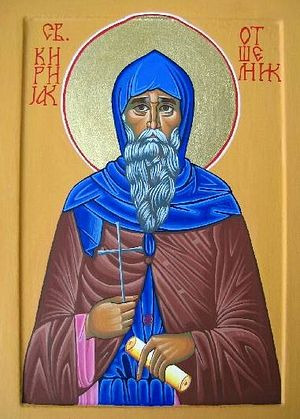
Saint Kyriakos (Kyriákos)1 was born in the Greek city of Corinth to the priest John and his wife Eudokίa. Bishop Peter of Corinth, a family relative, saw that Kyriakos was a quiet and sensible child, making him a reader in church. His constant reading of the Holy Scriptures awakened a love for the Lord and made him long for a pure and holy life.
When he was not yet eighteen years old, Kyriakos was deeply moved during a Church Service by the words of the Gospel: “If any man will come after Me, let him deny himself and take up his cross and follow Me” (Matthew 16:24). He believed that these words applied to him, so he went straight to the harbor without stopping at home, got onto a ship, and went to Jerusalem.
After visiting the holy places, Kyriakos lived for several months at a monastery not far from Sion, in obedience to the Igoumen Abba Eustorgios (Eustórgios). Later, with the latter's blessing, he made his way to the wilderness Lavra of Saint Euthymios the Great (January 20). Saint Euthymios, discerning great gifts of God in Kyriakos, tonsured him into the monastic schema and placed him under the guidance of Saint Gerasimos (Gerásimos) (March 4), who trained him in asceticism at the Monastery of Saint Theoktistos (Theóktistos) by the Jordan.
Saint Gerasimos, taking into account the fact that Kyriakos was very young, ordered him to live in a cenobitic monastery with the brethren. The young monk easily fulfilled his monastic obediences: he prayed fervently, he slept little, and ate food only every other day, sustaining himself with bread and water.
It was customary for the monks to go into the Rouva wilderness during Great Lent, and return to the Monastery on Palm Sunday. Seeing the young monk's strict abstinence, Saint Gerasimos decided to take him along with him. In complete solitude, the ascetics redoubled their efforts. Every Sunday Saint Gerasimos imparted the Holy Mysteries to his disciple.
After the repose of Saint Gerasimos, the twenty-seven-year-old Kyriakos returned to the Lavra of Saint Euthymios, who was no longer among the living. Father Kyriakos asked for a solitary cell and there he devoted himself to ascetical contests in silence, speaking only to the monk Thomas. But Thomas was sent to Alexandria where he was consecrated as a bishop, and Saint Kyriákos spent another ten years in complete silence. At the age of thirty-seven, he was ordained to the diaconate.
When a rift occurred between the monasteries of Saint Euthymios and Saint Theoktistos, Saint Kyriakos withdrew to the Souka Monastery of Saint Kharίton (September 28). At this Monastery they received even tonsured monks as novices, and Saint Kyriakos was also received this way. He toiled humbly at various monastic obediences. After several years, Saint Kyriakos was ordained as a priest, and was chosen as the canonarch,2 serving in this obedience for eighteen years. In all, Saint Kyriakos spent thirty years at the Monastery of Saint Kharίton (September 28).
Strict fasting and a complete lack of evil distinguished Saint Kyriakos even among the older ascetics of the Lavra. Each night he read the Psalter in his cell, interrupting his reading only to go to church at midnight. The ascetic slept very little. When he reached the age of seventy, Kyriakos went to the Natoufa wilderness, taking his disciple John with him.
In the desert the hermits ate only bitter herbs, which were made edible by the prayers of Saint Kyriakos. After five years, a certain man found out about the ascetics and brought his demon-possessed son to them, and Saint Kyriakos healed him. From that time, many people began coming to him with their needs, but he desired complete solitude, and fled to the Rouva wilderness, where he dwelt five years more. But the sick and those afflicted by demons also came to him in that wilderness, and the Saint healed them all with the Sign of the Cross and anointing them with oil.
In his eightieth year Saint Kyriakos fled to the remote Sousakim wilderness, near two dried up streams. According to Tradition, the holy Prophet David mentioned Sousakim: “Thou hast dried up the rivers of Etham” (Psalm 73/74:15). After seven years, brethren of the Souka Monastery came to him, beseeching his spiritual help during a period of debilitating hunger and illness, which God allowed. They implored Saint Kyriakos to return to the Monastery, and he settled in the cave where Saint Kharίton had once lived.
Saint Kyriakos provided great help to the Church in the struggle with the spreading heresy of Origenism. By prayer and by word, he brought the wayward back to the true path, and strengthened the Orthodox in their faith. Cyril, the author of the Life of Saint Kyriakos, and a monk of the Lavra of Saint Euthymios, was a witness when Saint Kyriakos foretold the impending death of the chief heretics Nonos and Leontius, and said that soon the heresy would cease to spread.
The Most Holy Theotokos once appeared to Saint Kyriakos in a dream, along with Saints John the Baptist and John the Theologian, ordering him to preserve Orthodox doctrine in its purity. She refused to enter his cell, however, because in it was a book with the writings of the heretic Nestorius. “My enemy is in your cell," she told him.3
At the age of ninety-nine, Saint Kyriakos went to Susakim again and lived there with his disciple John. In the desert, Saint Kyriakos was served by a huge lion, which protected him from robbers. The animal did not bother the brethren, and it ate food from the Saint's hand.
The ascetics had stored some water in the hollow of a rock during the winter, but in the heat of summer, all the water dried up. Since there was no other source of water, Saint Kyriakos prayed, and the rain fell, filling the hollow with water.
Saint Kyriakos returned to the Monastery two years before his death and settled once more in Saint Kharίton's cave. Until the end of his life the righteous Elder preserved his courage, and prayed with fervor. He was never idle, he either prayed or he worked. Before his blessed repose, Saint Kyriakos summoned the brethren and blessed them all. He fell asleep in the Lord, having lived for 109 years.
1 His name is derived from the Greek word Κύριος, which means Lord, or one who belongs to the Lord. 2 A Canonarch is the lead chanter or Reader. He ensures that other Readers chant from the correct texts and use the proper Tones. He also preserves the canonical order in the liturgical services, according to the Typikon. 3 The appearance of the Most Holy Theotokos to Saint Kyriákos is commemorated on June 8.
St. ONUPHRIUS THE WONDERWORKER OF GARESJA, GEORGIA ( 18th.c.)
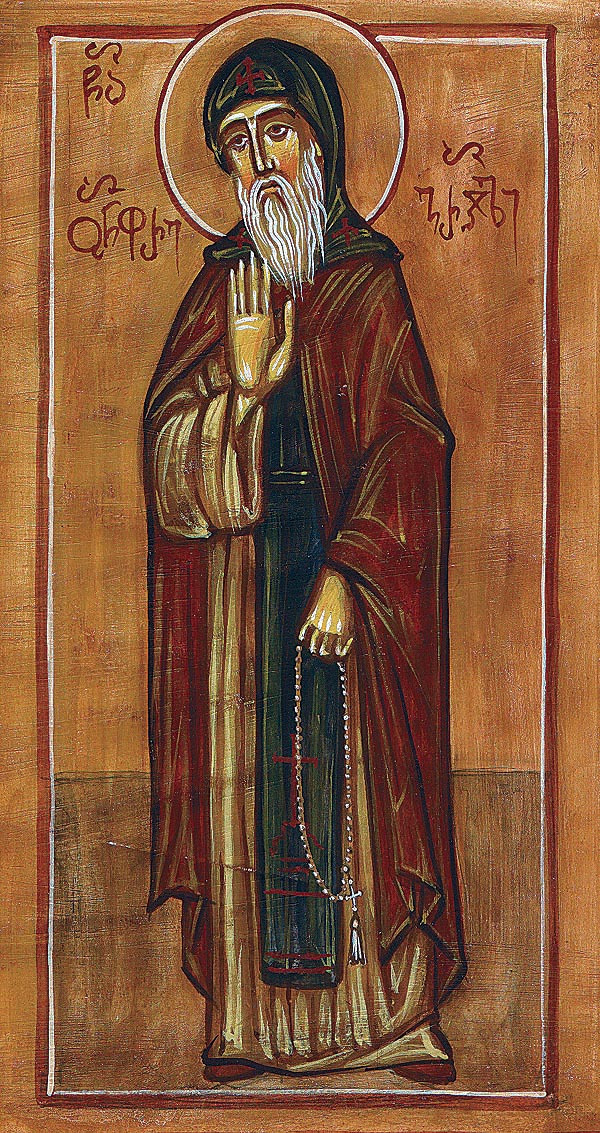
Saint Onuphrius of Gareji (Otar Machutadze in the world) lived and labored in the 18th century. He was a Karelian aristocrat famed for wealth, hospitality, and charity. Longing for the ascetic life, Otar wore a hair shirt under his distinguished raiment and unceasingly prayed to God for the strength to lead the monastic life. He revealed his will to his wife: “I thirst to turn from this world and draw nearer to Christ,” he said. “Therefore, I beg your forgiveness for all my transgressions, both voluntary and involuntary.” His faithful wife consented and permitted him to go in peace. Otar traveled with his two eldest sons to Tbilisi, blessed them, and bade them farewell for the last time. Then, he set off for the David-Gareji Monastery, led by the kindhearted superior Archimandrite Herman. Archimandrite Herman received Otar with great joy, and after a short time, he tonsured him with a monk named Onuphrius.
Blessed Onuphrius was a peaceful, humble and obedient man and a tireless ascetic. He would keep vigil through the night, and after the morning prayers he would go down to the ravine and continue to chant psalms, shedding tears over his past transgressions. He ate just one meal a day of bread and water, after the hour of Vespers. Once the Dagestanis attacked the David-Gareji Monastery, plundered the church, and took captive several monks including Onuphrius, the priests Maxime and Ioakime, and four deacons. Onuphrius was the oldest among them. The unbelievers planned to stab him to death, but the Lord protected him from their evil scheme. According to the will of the All-mercifulGod, Onuphrius was freed and returned to the monastery. The brotherhood was impoverished after the invasion, so Archimandrite Herman sent St. Onuphrius on a mission to solicit alms. It was difficult for St. Onuphrius to depart from the monastery, but he unquestioningly obeyed the will of his superior: the former aristocrat began to walk from door to door, begging for charity. At Tskhinvali in Samachablo St. Onuphrius attracted the attention of a crowd of people leading a young, demon-possessed man. The saint approached them and discovered that they were bringing the young man to a fortuneteller for help. With love and great boldness St. Onuphrius addressed the crowd, saying, “My children, such behavior is not fitting for Christian believers. Bring the young man to me!” The young man’s mother fell on her knees before him, begging for help, but St. Onuphrius raised her up and proclaimed: “I have come bearing earth from the grave of St. David of Gareji. This will help your son!” He dissolved a pinch of the earth in water and gave it to the young man to drink, and he was immediately healed. St. Onuphrius took with him his youngest son, John, and returned to the monastery with a great quantity of provisions. Once a certain Arab with a wounded eye came to the monastery seeking help. St. Onuphrius washed his eye in water from the holy spring of David-Gareji, and he was immediately healed. Later St. Onuphrius desired to be tonsured into the great schema. The superior was hesitant, and told Onuphrius to remain for twenty or thirty days at the grave of St. David praying and supplicating God to reveal His will. The saint remained there in prayer, and after thirty days God revealed to the abbot that Fr. Onuphrius was truly worthy of this honor. Then Schemamonk Onuphrius gave a vow of silence and began to sleep on a tattered mat. Under his clothing he wore a heavy chain, and he left his cell only to attend the divine services. Soon Blessed Onuphrius became so exhausted that he was no longer able to stand. The brothers begged him to lie on a bed and rest his head on a pillow, but the blessed Onuphrius opened his mouth for the first time since taking the vow of silence and said, “I vow to end my days on this mat.” St. Onuphrius endured his infirmities with thanksgiving and repeated the Jesus Prayer incessantly. When people came to receive his blessing, he would welcome them, saying, “Let me kiss the edge of your garments and wash your feet with my tears!” Sensing that the end of his days was approaching, St. Onuphrius partook of the Holy Gifts and, eighteen days later, on the Feast of Theophany, fell asleep in the Lord. St. Onuphrius was buried on the south side of the grave of St. David of Gareji, near the altar window.
© 2006 St. Herman of Alaska Brotherhood.


1 Corinthians 10:23-28
23 All things are lawful for me, but not all things are helpful; all things are lawful for me, but not all things edify. 24 Let no one seek his own, but each one the other's well-being. 25 Eat whatever is sold in the meat market, asking no questions for conscience' sake; 26 for "the earth is the LORD's, and all its fullness." 27 If any of those who do not believe invites you to dinner, and you desire to go, eat whatever is set before you, asking no question for conscience's sake. 28 But if anyone says to you, "This was offered to idols," do not eat it for the sake of the one who told you, and for conscience' sake; for "the earth is the LORD's, and all its fullness."
Luke 5:17-26
17 Now it happened on a certain day, as He was teaching, that there were Pharisees and teachers of the law sitting by, who had come out of every town of Galilee, Judea, and Jerusalem. And the power of the Lord was present to heal them. 18 Then behold, men brought on a bed a man who was paralyzed, whom they sought to bring in and lay before Him. 19 And when they could not find how they might bring him in, because of the crowd, they went up on the housetop and let him down with his bed through the tiling into the midst before Jesus. 20 When He saw their faith, He said to him, "Man, your sins are forgiven you." 21 And the scribes and the Pharisees began to reason, saying, "Who is this who speaks blasphemies? Who can forgive sins but God alone?" 22 But when Jesus perceived their thoughts, He answered and said to them, "Why are you reasoning in your hearts? 23 Which is easier, to say, 'Your sins are forgiven you,' or to say, 'Rise up and walk'? 24 But that you may know that the Son of Man has power on earth to forgive sins-He said to the man who was paralyzed, "I say to you, arise, take up your bed, and go to your house." 25 Immediately he rose up before them, took up what he had been lying on, and departed to his own house, glorifying God. 26 And they were all amazed, and they glorified God and were filled with fear, saying, "We have seen strange things today!"
#orthodoxy#orthodoxchristianity#easternorthodoxchurch#originofchristianity#spirituality#holyscriptures#gospel#bible#wisdom#faith#saint
6 notes
·
View notes
Text
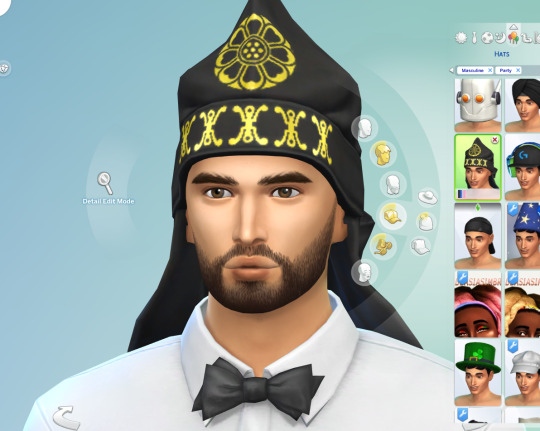
why is there a grand schema in the sims. for all the orthodox monks playing?
18 notes
·
View notes
Text




"Whoever wants to be My disciple must deny themselves, take up their cross, and follow Me." (Matthew 16:24)
For this piece, The Altar of Sacrifice, I started with the desire to visually explore the symbols found on the Great Schema worn by Orthodox monks. Using digital collage techniques, I wanted to represent them in a way that doesn't confine them to an isolated "sacred" space but brings them closer to our everyday lives, no matter who we are or where we find ourselves.
Every detail tells a story. The cross inscribed with IC XC NIKA (Jesus Christ Conquers) is not just a sign of divine victory but also of the personal struggles each of us carries. The crown of thorns, the spear, and the sponge remind us of suffering and humility, but also of acceptance. The ladder symbolizes the inner ascent, the constant struggle between falling and rising, while the pillar speaks of perseverance and the trials we face. The rooster, seemingly a simple symbol, reflects the fragility of our faithfulness and those moments when we forget who we truly are.
Read more on: www.cristiancalistru.com/conceptposters
#SpiritualJourney#SacredSymbols#InnerStruggle#FaithAndReflection#CrossAndCourage#OrthodoxSymbols#TheGreatSchema#DigitalCollageArt#ContemporarySpiritualArt#ArtWithMeaning#SymbolicArt#VisualStorytelling#ArtAndFaith#ModernIconography#InvisibleBurdens#EverydaySacrifices#CourageToRise#LessonsInLoss#StrugglesAndHope#ResilienceAndFaith#ThePowerOfSacrifice
2 notes
·
View notes





